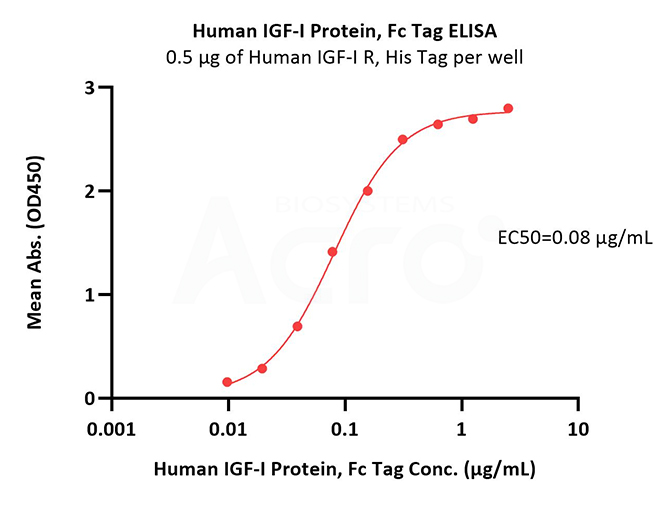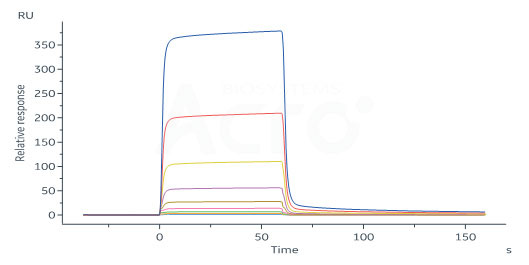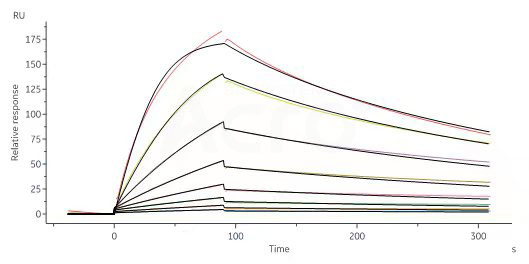
Leave message
Can’t find what you’re looking for?
Fill out this form to inquire about our custom protein services!
Inquire about our Custom Services >>


































 Limited Edition Golden Llama is here! Check out how you can get one.
Limited Edition Golden Llama is here! Check out how you can get one.  Limited Edition Golden Llama is here! Check out how you can get one.
Limited Edition Golden Llama is here! Check out how you can get one.
 Offering SPR-BLI Services - Proteins provided for free!
Offering SPR-BLI Services - Proteins provided for free! Get your ComboX free sample to test now!
Get your ComboX free sample to test now!
 Time Limited Offer: Welcome Gift for New Customers !
Time Limited Offer: Welcome Gift for New Customers !  Shipping Price Reduction for EU Regions
Shipping Price Reduction for EU Regions
> Insulin-like Growth Factor(IGF)Family
Insulin-like growth factor (IGF) is a group of growth hormones that play a key role in regulating the signaling processes critical to cell proliferation, differentiation, and survival. These growth factors are expressed in various tissues and cell types, with autocrine, paracrine and endocrine functions. There are two types of IGFs, type I(IGF-I) and type II (IGF-II), act by binding to their specific membrane receptors: IGF-I R and IGF-II R.
As with IGF, IGF receptors are also potential targets for targeted therapies. IGF-I R is a heterotetrameric transmembrane protein with two disulfide-linked alpha subunits and two transmembrane beta subunits. Activation of this pathway has been linked to cancer initiation and growth, with many types of tumor cells overexpressing IGF-IR to promote resistance to radiotherapy, chemotherapy and targeted therapies. To overcome this resistance, IGF / IGF-IR targeted therapies have become a viable cancer treatment strategy. Teprotumumab, a representative drug targeting IGF-IR, was approved by the US Food and Drug Administration (FDA) in 2020 for the treatment of thyroid-associated ophthalmopathy (TAO). Initial studies suggest that combined targeting of IGF-IR and STAT3 may inhibit tumor metastasis and overcome resistance to STAT3-mediated anti-IGF-IR therapy, maximizing the efficacy of cancer treatment.

Schematic diagram of IGF-targeted drugs

Therapeutic strategies to inhibit IGF-IR signaling
ACROBiosystems has developed a series of HEK293-expressed IGF and IGF receptor family proteins, including IGF-IR tetrameric protein, IGF-I, IGF-II, IGFBP-3, IGFBP-4 and IGFBP-7. The IGF family proteins are available in various species and tags, with high purity and high structural homogeneity verified by SDS-PAGE/SEC-MALS. High bioactivity was also validated by ELISA/SPR. Our proteins also undergo a strict quality control system to ensure stable performance in immunization, antibody drug screening and characterization studies to help drug development targeting IGF.
| Molecule | Cat. No. | Species | Product Description | Preorder/Order |
|---|

The purity of Human IGF-I R, His Tag (Cat. No. IGR-H5229) is more than 90% and the molecular weight of this protein is around 252-308 kDa verified by SEC-MALS.
[1] Wang P, Mak V C Y, Cheung L W T. Drugging IGF-1R in cancer: new insights and emerging opportunities[J]. Genes & Diseases, 2022.https://doi.org/10.1016/j.gendis.2022.03.002.
[2] Lin S L, Lin C Y, Lee W, et al. Mini Review: Molecular Interpretation of the IGF/IGF-1R Axis in Cancer Treatment and Stem Cells-Based Therapy in Regenerative Medicine[J]. International Journal of Molecular Sciences, 2022, 23(19): 11781.https://doi.org/10.3390/ijms231911781.
[3] Morrione A, Belfiore A. Obesity, Diabetes, and Cancer: The Role of the Insulin/IGF Axis; Mechanisms and Clinical Implications[J]. Biomolecules, 2022, 12(5): 612.https://doi.org/10.3390/biom12050612.
This web search service is supported by Google Inc.













